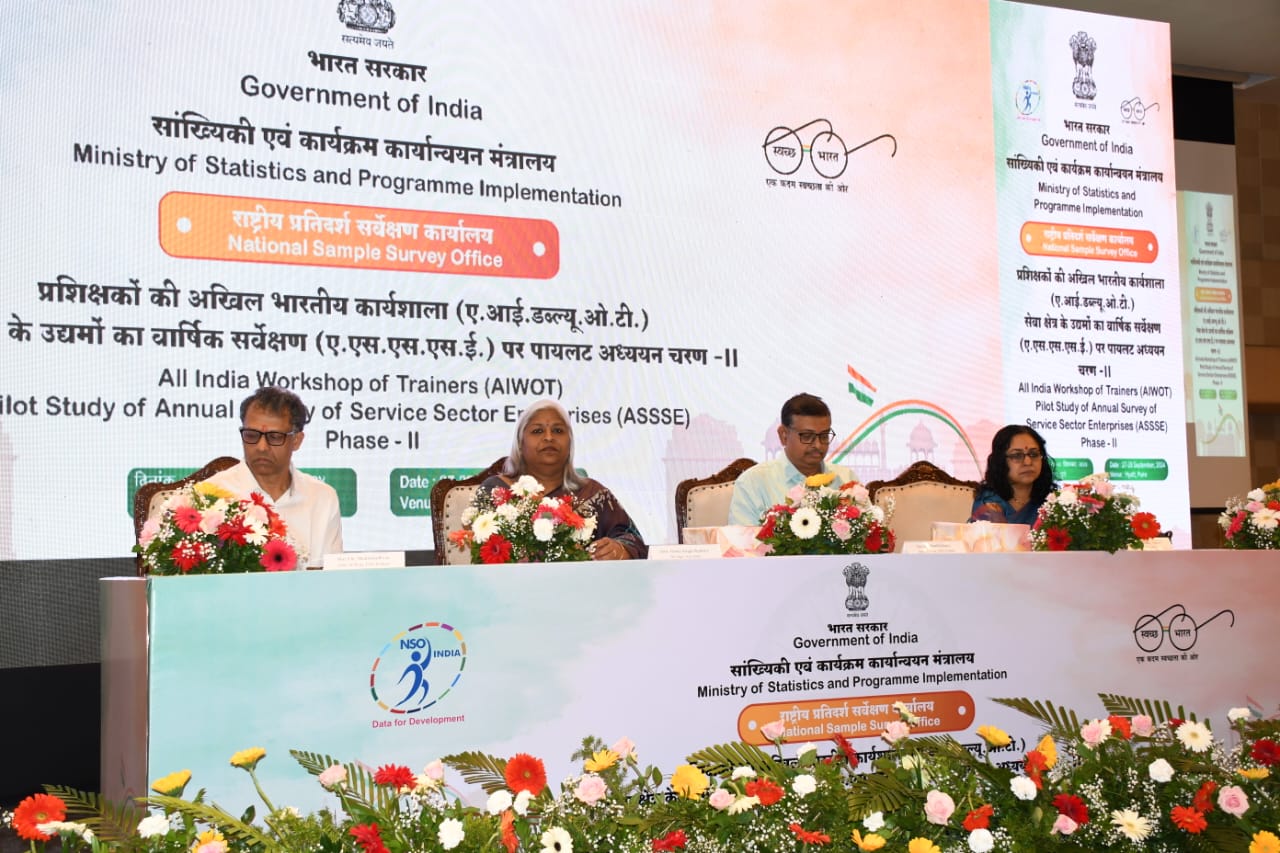- Courses
- GS Full Course 1 Year
- GS Full Course 2 Year
- GS Full Course 3 Year
- GS Full Course Till Selection
- CSAT
- 5 LAYERED ARJUNA Mentorship
- Public Administration Optional
- Online Program
- GS Recorded Course
- NCERT (Recorded 500+ Hours)
- Polity Recorded Course
- Geography Recorded Course
- Economy Recorded Course
- AMAC Recorded Course
- Modern India, Post Independence & World History
- Environment Recoded Course
- Governance Recoded Course
- Science & Tech. Recoded Course
- International Relations and Internal Security Recorded Course
- Disaster Management Module Course
- Ethics Recoded Course
- Essay Recoded Course
- Current Affairs Recoded Course
- ABOUT US
- OUR TOPPERS
- TEST SERIES
- FREE STUDY MATERIAL
- VIDEOS
- CONTACT US
PLACES IN NEWS 15th MARCH 2025
PLACES IN NEWS 15th MARCH 2025
15-03-2025

Chenab River
Why in news?
- Deputy Chief Minister of Jammu and Kashmir informed the House that the Rs. 41.78 crore Maitra Ramban bridge over Chenab River shall be completed by August 2026.
About Chenab River:
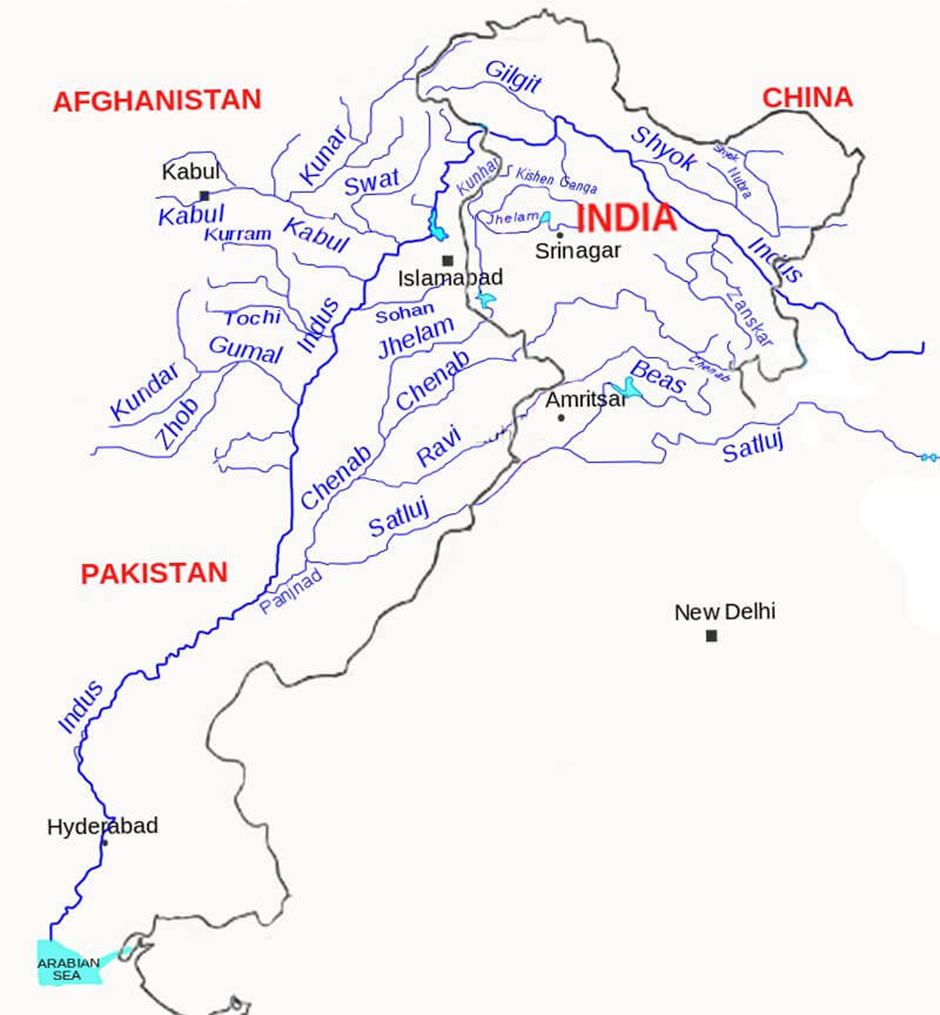
- Origin and Course:
- The Chenab River is one of the five major rivers of the Punjab region, flowing through India and Pakistan. It is a significant part of the Indus River system.
- The river originates from the confluence of the Chandra and Bhaga rivers in the Lahaul region of Himachal Pradesh, India.
- The Chandra River arises from glaciers near Chandra Taal, while the Bhaga River originates from Surya Taal Lake, near the Baralacha La pass.
- These two rivers merge at Tandi, forming the Chandrabhaga, which later becomes the Chenab.
- The river flows through Jammu and Kashmir, passing through Kishtwar, Doda, Ramban, Reasi, and Jammu districts, before entering Pakistan’s Punjab province.
- In Pakistan, the Chenab merges with the Sutlej River, forming the Panjnad River, which ultimately joins the Indus River at Mithankot. The total length of the river is approximately 974 km.
- Tributaries:
- The Tawi River, originating from the Kailash Kund glacier, is an important right-bank tributary. The Ravi River merges with the Chenab in Pakistan.
- The Marusudar River, the largest right-bank tributary, originates from the Warwan Valley in Jammu and Kashmir.
- The Jhelum River, a major river of the Kashmir Valley, also joins the Chenab.
- Other significant tributaries include the Neeru River and Kalnai River, both originating in the Jammu region.
- Proposed Project:
- The Maitra Bridge Project, a crucial infrastructure development over the Chenab River, is being constructed in Ramban, Jammu & Kashmir, at a cost of ₹41.78 crore.
- The bridge is expected to be completed by August 2026 and aims to enhance connectivity in the region, improving accessibility for local communities and boosting transportation efficiency.
- Given the challenging terrain of Ramban district, the bridge will ensure safe and reliable movement across the river, especially during extreme weather conditions.
Nagarahole Tiger Reserve
Why in news?
- To address water scarcity, waterholes in Nagarahole Tiger Reserve have been replenished, ensuring wildlife sustenance.
About Nagarahole Tiger Reserve:
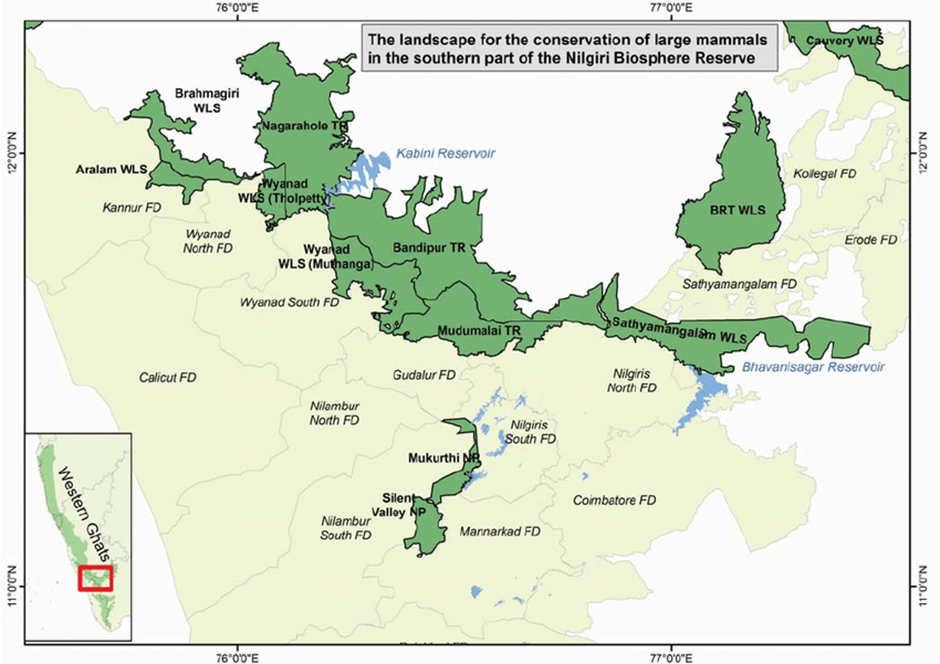
- Location and Geography:
- Nagarahole Tiger Reserve, also known as Nagarahole National Park, is located in the Kodagu and Mysore districts of Karnataka, India.
- It was declared the 37th Tiger Reserve of India in 1999 and is a part of the Nilgiri Biosphere Reserve.
- The park spans 643 km² and, along with Bandipur National Park, Mudumalai National Park, and Wayanad Wildlife Sanctuary, forms the largest protected area in southern India.
- It is under consideration for UNESCO World Heritage Site status as part of the Western Ghats Nilgiri Sub-Cluster.
- The reserve lies at the foothills of the Western Ghats, extending from the Brahmagiri Hills toward Kerala.
- It is separated from Bandipur National Park by the Kabini Reservoir.
- The park receives an annual rainfall of approximately 1,440 mm and features rivers, lakes, swamps, and waterfalls, including the Kabini and Lakshmmantirtha rivers.
- Flora and Fauna:
- The vegetation consists of moist deciduous forests in the southern region and dry deciduous forests in the east.
- Key tree species include teak, rosewood, sandalwood, and silver oak. The park also has patches of submontane valley freshwater swamp forests.
- The understory consists of species like Indian gooseberry, beechwood, and various shrubs, with bamboo and flowering trees such as flame-of-the-forest and golden shower tree adding to the biodiversity.
- The park is home to Bengal tigers, Indian leopards, dholes, sloth bears, and elephants.
- Large herbivores such as gaur, sambar, chital, barking deer, and wild boars thrive in the region.
- The reserve is an Important Bird Area (IBA) with over 270 bird species, including the Malabar trogon, Nilgiri wood pigeon, and grey-headed fish eagle.
- Reptiles such as the mugger crocodile, Indian python, and Russell’s viper, along with amphibians like the golden bullfrog and tree frogs, inhabit the park.
Omkareshwar Temple
Why in news?
- The Madhya Pradesh Budget 2025-26 includes plans to develop the Omkareshwar Temple similar to Ujjain’s Mahakal Lok Corridor, aiming to enhance spiritual tourism and infrastructure in the state.
About Omkareshwar Temple:
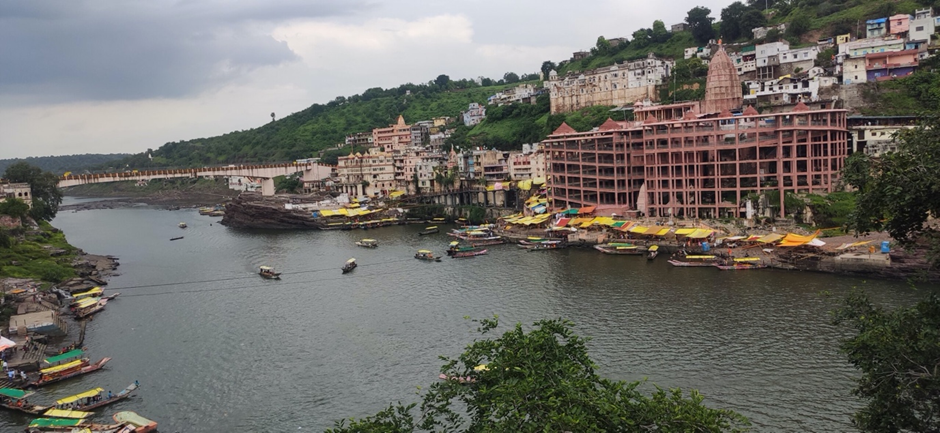
- Omkareshwar Temple is a revered Hindu temple dedicated to Lord Shiva, situated in Khandwa district, Madhya Pradesh, India.
- It is one of the 12 Jyotirlingas, believed to be the most sacred shrines of Shiva.
- The temple is located on Mandhata Island, formed by the Narmada River, and is said to resemble the Devanagari ‘ॐ’ symbol.
- There are two main Shiva temples in the area—Omkareshwar Temple, located on the island, and Mamleshwar Temple, situated on the southern bank of the Narmada River on the mainland.
- Omkareshwar is approximately 140 km from Mahakaleshwar Jyotirlinga in Ujjain, another important Shiva shrine in Madhya Pradesh.
- The Narmada River, one of India's holiest rivers, is also home to the Omkareshwar Floating Solar Power Project, one of the world’s largest floating solar plants.
- This 600 MW renewable energy project, set up on the backwaters of the Omkareshwar Dam, aims to boost India’s clean energy capacity.
- The temple and its surroundings thus combine spiritual, historical, and modern technological significance.
Lake Urmia
Why in news?
- Lake Urmia in Iran has seen a significant rise in water levels due to increased rainfall and conservation efforts.
About Lake Urmia:
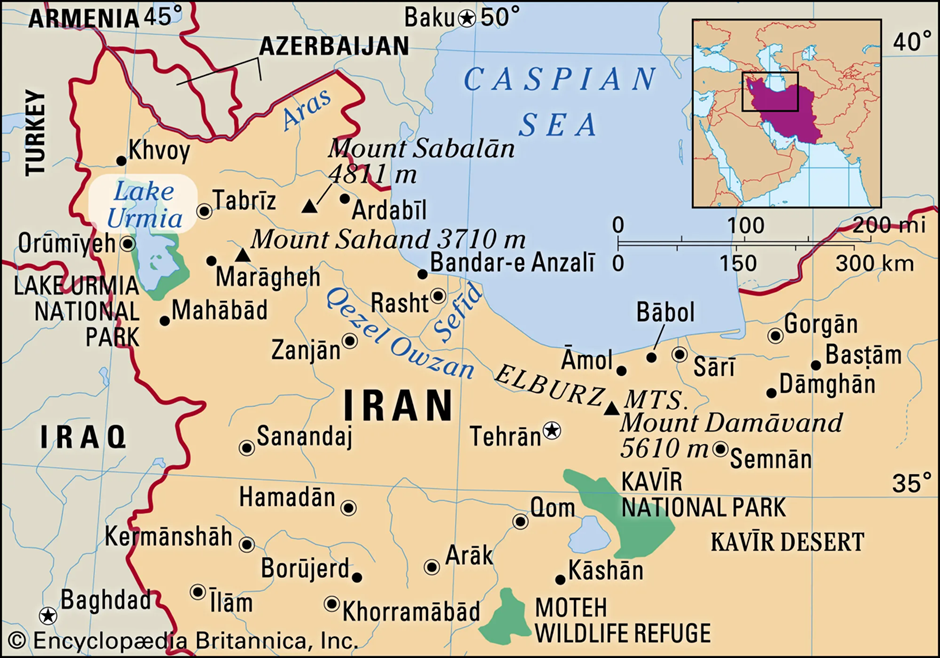
- Location:
- Lake Urmia is an endorheic saltwater lake in north-western Iran, situated between East Azerbaijan and West Azerbaijan provinces.
- Once the largest lake in the Middle East, it covered around 6,000 km². However, in recent decades, it has faced severe shrinkage due to a combination of natural and human-induced factors.
- Reason Behind Shrinkage of River:
- The decline of Lake Urmia began in the late 20th century, primarily due to persistent droughts, excessive dam construction on its feeder rivers, and unsustainable groundwater extraction.
- By 2017, the lake had lost nearly 90% of its original size, with water volume reduced to just 1/60th of what it was in 1998.
- Rising salinity levels further threatened the lake’s ecosystem, endangering migratory birds and Artemia populations.
- Infrastructure projects, like the Urmia Lake Bridge and its causeway, also disrupted water flow, accelerating the crisis.
- Recent Increase in Water Levels:
- The lake has seen signs of recovery since 2019 due to increased rainfall and government-led conservation efforts.
- The Iranian government, alongside international organisations like the UNDP and FAO, implemented the Urmia Lake Restoration Program (ULRP).
- Measures such as water diversion from the Zab River, improved irrigation practices, and afforestation to control salt storms have contributed to rising water levels.
- Recent interventions, including the planting of salt-resistant vegetation and restrictions on groundwater use, have further aided the lake’s restoration.
Amchang Wildlife Sanctuary
Why in news?
- The Assam government has sought three months to rationalize the Amchang Wildlife Sanctuary's boundary, addressing encroachment concerns while balancing conservation efforts and human settlement issues near Guwahati.
About Amchang Wildlife Sanctuary:
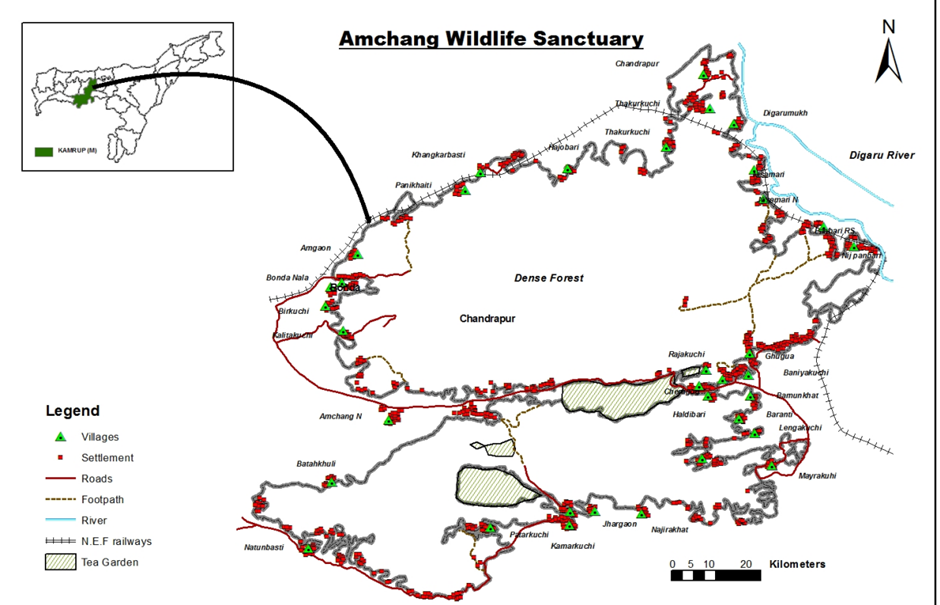
- Location and Geography:
- Amchang Wildlife Sanctuary is located on the eastern fringe of Guwahati, Assam, India.
- The name Amchang originates from the village Amcheng (now Amsing), which is situated within the sanctuary.
- The sanctuary was formed in 2004 by merging three reserved forests—Amchang Reserved Forest, South Amchang Reserved Forest, and Khanapara Reserved Forest.
- It covers an area of 78.64 km² and serves as an important ecological buffer for Guwahati.
- The region is dominated by tropical moist deciduous forests, with semi-evergreen forests found in depressions and river valleys.
- Flora and Fauna:
- The sanctuary’s vegetation primarily consists of tropical moist deciduous forests, interspersed with patches of semi-evergreen forest and bamboo groves.
- It is home to a significant population of elephants, which are isolated with no connectivity to other elephant habitats.
- Other mammals include Chinese pangolins, slow lorises, Assamese macaques, rhesus monkeys, hoolock gibbons, leopards, leopard cats, jungle cats, sambars, barking deer, red serows, Malayan giant squirrels, and crestless Himalayan porcupines.
- A unique feature of the sanctuary is an isolated population of gaur (Indian bison), with no connection to other regions.
- Amchang is an Important Bird and Biodiversity Area (IBA), with species such as white-backed vulture, slender-billed vulture, white-cheeked hill partridge, grey peacock pheasant, kaleej pheasant, greater adjutant stork, great pied hornbill, oriental pied hornbill, and green imperial pigeon.
- Wild elephants from Amchang occasionally venture into Guwahati City, sometimes reaching the city’s core.
|
UPSC CSE PYQs Q1. With reference to the Indus river system, of the following four rivers, three of them pour into one of them which joins the Indus directly. Among the following, which one is such a river that joins the Indus directly? (2021)
Answer: Option D
|
|
Also Read |
|
| Public Administration Optional | |
| UPSC Monthly Magazine | Question Answer Practice For UPSC |



